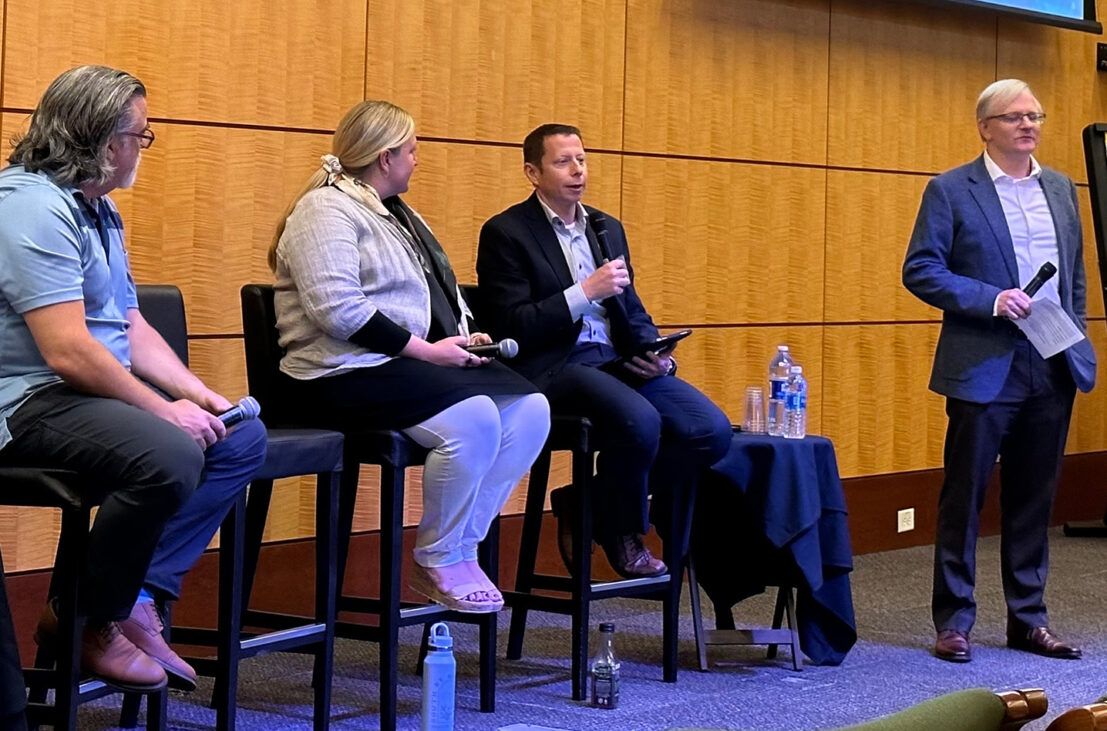
July 14, 2023
NBAA Director of Airports and Ground Infrastructure Alex Gertsen urged the airport industry to be prepared for the emerging technology of advanced air mobility (AAM), during a panel discussion at an Airport Cooperative Research Program (ACRP) Insight event July 11.
“NBAA is working to help integrate AAM successfully into the National Airspace System, ensuring interoperability with all existing aircraft types and ultimately to let airports know that they should be preparing for electrification and new aircraft arriving, not to sit back and just say, ‘Oh, I can wait’,” Gertsen said.
The core vision for AAM involves aircraft that use electric or hybrid propulsion – some will take off and land vertically – and are expected to be much quieter than traditional aircraft. They can be utilized in all areas of business aviation as air taxis and other types of on-demand air transportation for people and cargo, and also as part of flight department aircraft fleets.
“Airports need to be engaged and involved,” Gertsen added. “And ultimately, it’s valuable for the ACRP to be so engaged.” The ACRP is an applied research program managed by the Transportation Research Board, which is part of the National Academies of Sciences, Engineering and Medicine.
Gertsen said a major benefit of AAM is that it is electric.
“There’s no emissions,” he said. “While they are not a direct replacement for helicopters, they alleviate a lot of the community concerns that exist now for airports like East Hampton (JPX) and Santa Monica (SMO) where the surrounding communities are more sensitive to that.”
During the panel, Gertsen noted that NBAA started an Advanced Air Mobility Roundtable a couple of years ago, which includes leading electric vertical takeoff and landing (eVTOL) developers, as well as Hillwood Aviation. Read more about the NBAA AAM Roundtable.
“We have a lot of thought leaders there, looking at ways of bringing infrastructure to the level where it’s ready for operations once aircraft are certified, looking at integrating into the existing space with existing operators,” he said. “And then ultimately, how do we scale it? How do we grow it? How do we get the most out of it? How do we not just engage but involve the communities? How do we operate at existing airports? How do we build new vertiports? We’re looking at all that.”
Gertsen mentioned NBAA has provided feedback to the FAA about initial guidance issued by the agency that currently distinguishes eVTOL from helicopters when it comes to vertiport and heliport infrastructure use.
“We see them as the two integrated vertical lift operations and infrastructure should be dual use,” he told the audience. “So, we’re working with the agency, and the Office of Airports has been engaged, listening and taking our input. As we transition, a lot of the existing infrastructure will be used. And as the new infrastructure gets built, it will be important that the legacy aircraft are able to use it as well.
“This is an exciting time to be in aviation with NBAA being on the forefront of AAM initiatives,” he added. “We are going to have a great AAM presence in the exhibit hall at NBAA’s convention coming up in Las Vegas and I invite everyone to join us there.”


 International Business Aviation Council Ltd.
International Business Aviation Council Ltd.